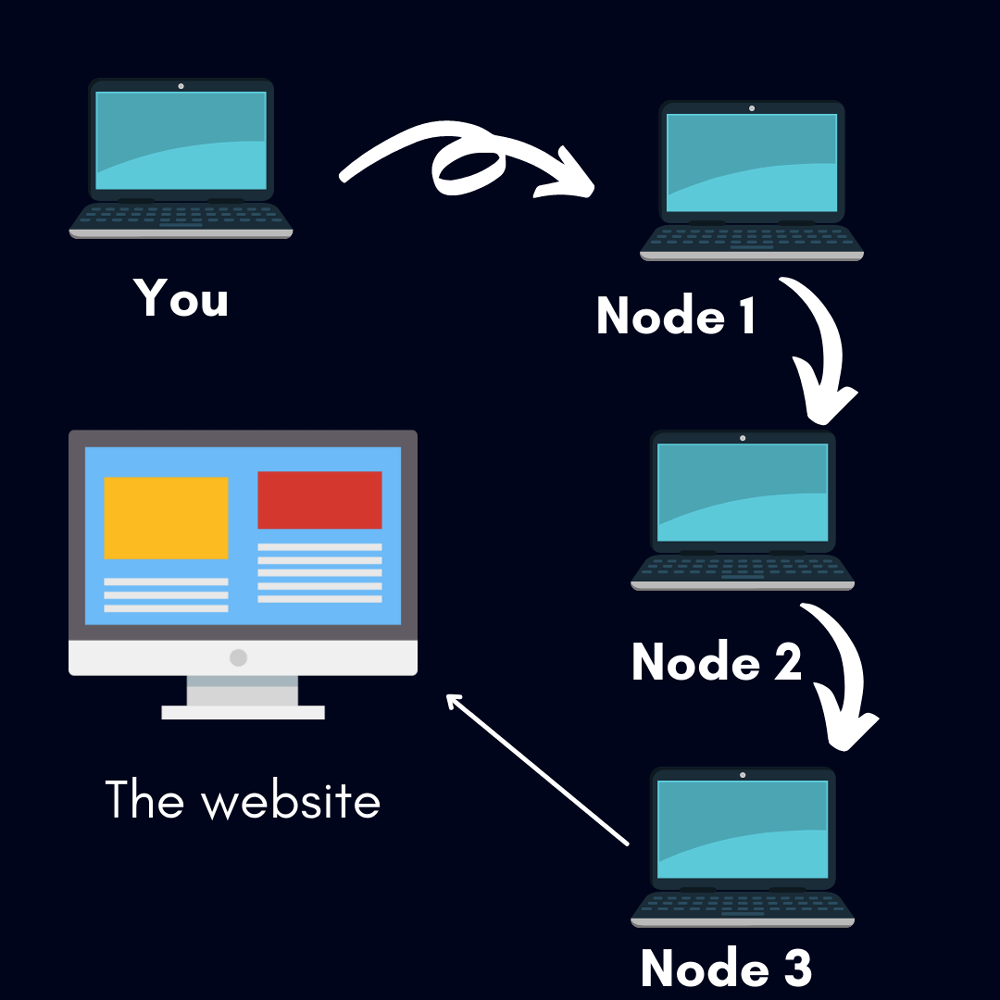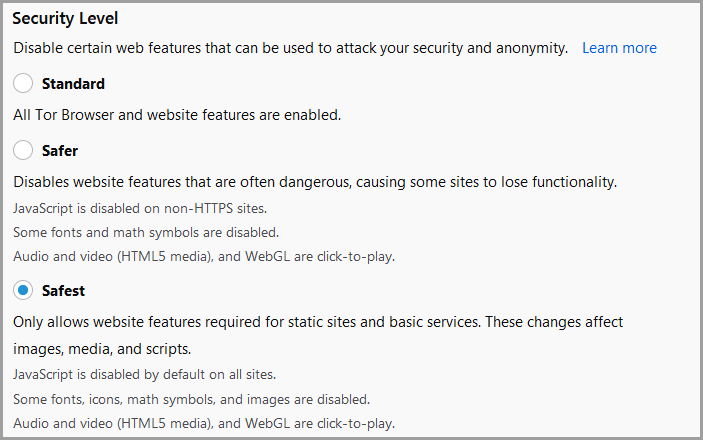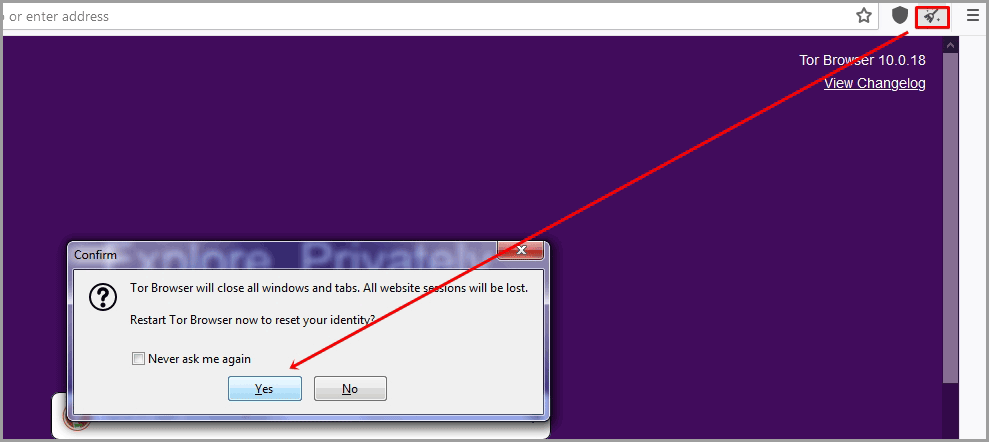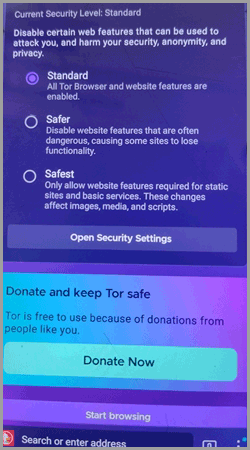This Tor browser review will introduce you to Tor. If you’ve never used Tor before, this is for you. Even if you’re a Tor user, you’ll still find information that’ll be news to you.
Even though it isn’t a Tor browse tutorial, I’ve covered the basics on how to use Tor. You’ll learn how to increase Tor security, how to use Tor on Android and even how to use Tor to access the deep web.
Some of the most basic questions such as How to use tor browser, its legality and safety too have been covered.
Disclaimer: Do not use any content/information of this guide for illegal purposes, including but not limited to trading on darknet markets, watching illegal videos and so on. Doing so will solely be your own responsibility. This is an educational and informative article.
Table of Contents
- 1 What is Tor browser? [The simplified answer]
- 2 How does Tor browser work?
- 3 Tor Browser Review- User Interface
- 4 How to use Tor browser?
- 5 How to use Tor browser on Android?
- 6 Difference between Tor and a VPN
- 7 How to use the Tor browser to access the deep web?
- 8 Is Tor browser legal?
- 9 Is Tor browser safe?
- 10 Which is the best VPN for Tor browser?
- 11 Why is Tor browser so slow?
- 12 Final words- Tor browser review
What is Tor browser? [The simplified answer]
TOR stands for –“The Onion Router”. It is a browser that lets you access the onion network.
In other words, it is a browser which helps us access .onion domains. This is the domain extension used on the onion network.
The onion network doesn’t use .com/.net/.org or the other common extensions we use on the clearnet.
Tor browser is also known as the dark web browser. That is because the .onion network hosts the dark web. So, by letting us access .onion domains, it lets us access the dark web.
Tor is completely free and open-source. It is not “for-profit”. The sole goal of the browser is to promote free, decentralized, surveillance-free, censor-free internet.
How does Tor browser work?
TOR is called “The Onion Router” and not “The Onion Browser”. That’s because TOR “routes” your traffic.
Meaning, it doesn’t send your request directly to the website you’re trying to visit. Rather, it sends them to “nodes”. These are run by volunteers. These nodes then forward your request to other nodes.
Only after a minimum of 3 nodes your request is sent to the website you’re trying to visit. This entire chain of you and the other nodes is called a “Tor circuit”.
Because of the routing, no website sees your real IP address. It sees the IP address of the last node which forwarded your request.
No individual node knows you and the website you’re trying to visit at the same time. So, even the nodes can not connect you to the final website you visit, or what you do there.
This graphic here should help you understand the concept better:

In the above example, node 1 knows who you are, and who node 2 is. But, it doesn’t have any link to node 3, or the final website you’re trying to visit.
Similarly, node 2 knows node 1 and node 3, but doesn’t know who you are, or the final website.
Finally, node 3 does know what website you’re finally visiting, but, it has no idea of who yofnoru are because it only knows node 2.
This adds anonymity to your connection. This is why Tor is used to access the dark web. Your connection then can’t be traced back to you.
Secondly, Tor “encrypts” your connection. This means, your connection can not be intercepted/hacked by a third-party.
Without Tor, your computer’s TCP connection to website’s can easily be intercepted. They reveal which websites you visit. This isn’t possible when you’re using Tor.
On a simpler level, Tor also isolates your cookies and even auto-deletes browser history after each session. This makes sure websites can’t trace and track you across other websites.
Do note that this is an extremely simplified explanation. I wish this Tor review to be informative and entertaining without boring you to death. In the real world, a lot more happens in the background.
But, I’m confident you now know how Tor works, don’t you?
Tor Browser Review- User Interface
If you’ve used Tor or are familiar with its options, I recommend you skip to the next section.
I’m only including this because I wish this Tor review to be detailed and for everyone.
So, here’s the Tor welcome interface/homepage/dashboard:

Just like on Mozilla, there’s the URL-bar, bookmark icon, security shield, “reset identity” button, and the menu button.
You may notice that the screen is resized. Tor doesn’t use your entire screen. This is done to protect you from fingerprinting.
In other words, hackers and other third-parties can use your “screen size” to identify you. By resizing the screen, Tor changes your device’s fingerprint. Your adversaries see this resized size, which isn’t your real screen size, and hence you stay protected.
This does prove that you can use Tor even if you’re a very basic user, can’t you?
How to use Tor browser?
All that talk of routing and encryption may make it sound very complicated. In reality, using Tor is extremely easy.
In fact, if you’ve used Mozilla Firefox, you wouldn’t even feel a difference. Tor is based on Mozilla’s code, so the interface is identical.
Anyway, in order to use Tor, first download Tor. It’s free and pretty lightweight.
After downloading Tor, install it like any other software. You’re ready to run Tor right away.
You can enter any address (either .onion domains or clearnet/normal websites) on the URL bar and the websites would load.
However, I’ll recommend you increase your security. Well yes, that’s possible with Tor and takes seconds.
You should click on the “shield” icon on the URL-bar.

On the next screen, choose the “safest” option.

Do note that doing this reduces a few features. You’re basically disabling JavaScript among some other things. As a result, some websites may look weird and fail to load a few components.
However, doing this increases your security multiple fold.
You may enable/disable it at will. Whenever you’re accessing safer websites, such as a blog or social media, you may choose the “Standard” option. When you browse the dark web, forums, or other risky websites, you should change back to “safest”.
New circuits and identity
This is an optional feature which will help you increase anonymity and solve a few problems.
You can create a “New Tor Circuit” anytime you want to. This de-links your next actions from whatever you were doing in your Tor browser previously.
All your cookies and history is cleared, and a new Tor circuit is created.
To do that, click on the “broom” icon on the top-right and select “yes” on the popup.

Done! Your tabs and windows will be closed and your Tor circuit will be changed.
There’s another option called “New Tor Circuit for this Site”. As is clear, it too creates a new Tor circuit, but for your current tab. Your other tabs use the same circuit they were using previously. Only your current tab (any tab you are on when using this option) gets a new Tor circuit.
You can use it by clicking on the “menu options” > new Tor circuit for this site.

Both these features are definitely useful for changing your identity and increasing anonymity. However, they’re also helpful when you can’t load certain websites.
At times, your exit node may prevent you from accessing certain websites. Using either one of these changes the exit node, as a result, you may be able to access those restricted websites.
How to use Tor browser on Android?
Tor browser can be used on Android. It has native apps for the platform. Here’s how to use Tor on Android:
- Download Tor for Android from Playstore.
- Run the application and click on “connect”.

- You’ll be shown the security settings by default. Click on the “safest” option for added security. You may also leave it at standard although it’s less secure.

- Done! You can start using Tor on your Android device right away!
Difference between Tor and a VPN
I said Tor hides your IP address, so, is Tor browser a VPN?
No. Tor and VPN may serve similar purposes, but they’re very (very) different.
In fact, you must never use Tor without a VPN. I’ve explained the reasons in detail, just scroll down to the “Is Tor browser safe” section below.
Anyway, Tor is a non-profit software. VPNs on the other hand are mostly for profit.
The Tor nodes are run by volunteers and third-parties. This “volunteer” can be anyone, even law enforcement agencies which complicates the situation.
The VPN however uses its own server to mask your IP address. So, no one else except the VPN company controls the IP address you get.
With Tor, you do not get to choose the IP or the country of your other nodes. With a VPN, you can specify exactly which country you’d like to connect to.
Tor is just one application. It hides you only as long as you’re using Tor. A VPN on the other hand protects your entire system.
Once you enable a VPN, you can use any software, browser, application of your choice. Your IP address is masked throughout all of these.
The most important difference however is resistance! A third-party with enough skills may hack Tor. There’s no “resistance” for someone hacking Tor as there’s no “office” or “corporation” which will actively hide you.
In fact, Tor has been hacked, by the FBI, more than once in the past! (That vulnerability has been patched since then).
However, with a VPN, you’re actively protected. E.g. NordVPN is a Panama based VPN. The U.S/U.K or most other govt. have no control or jurisdiction in Panama. As a result, they can not request or force NordVPN to reveal your identity.
More importantly, NordVPN is one of the very few VPNs which publicly got its “no log” policy audited, by a third-party firm. This proved they truly do not keep logs. As a result, even when forced, a VPN like NordVPN can not reveal your identity even if they want to. They simply do not know who you are!
Also, the speed of your Tor connection depends on specific circuits. Depending on the nodes you get, your connection may be faster or slower.
However, with a VPN, speed is generally constant and doesn’t change much depending on different IP addresses. VPNs invest heavily in their speed infrastructure. E.g. NordVPN is one of the only 4 VPNs I’ve seen offer the “WireGuard” protocol which is extremely fast.
As for encryption, Tor uses a single type of encryption for your connection. On the other hand, a VPN offers many protocols. You can choose from L2TP, PPTP, OpenVPN, IKeV etc. These affect your speed, security and offer you more control.
In other words, a VPN is complimentary to Tor. It makes your identity untraceable even if your Tor circuit is backtracked to you.
How to use the Tor browser to access the deep web?
Before we proceed, you need to understand what the deep web is.
Technically, almost everything on the .onion network is “deep web”. Because, those websites are not indexed by Google, Bing, Yahoo or any other clearnet search engines.
So, in order to access the deep web using Tor browser, you only need a .onion address. It can be a darknet market, a harmless blog or social media platform, a murder-for-hire service (yeah those are real) or anything else.
You can use darknet search engines to find .onion addresses on the deep web. If you’re new, go here- phobosxilamwcg75xt22id7aywkzol6q6rfl2flipcqoc4e4ahima5id.onion using your Tor browser.
It’s a darknet search engine. Type anything in the search-bar and it’ll show you relevant deep web sites.
Is Tor browser legal?
One of the most asked questions around Tor is- “Is using Tor browser illegal”? No, it’s not.
Tor is just a browser. You can use it to browse legal clearnet/onion sites, or illegal dark web sites.
Just because it routes your connection or makes you anonymous doesn’t make it illegal.
It’s your activities which make it either legal or illegal. E.g. if you purchase drugs on the dark web using Tor, you’re committing a crime. But even then, you’ll be prosecuted for “buying drugs” and not for using Tor.
Is Tor browser safe?
Being “legal” and being “safe” are two very different things. While Tor is relatively safer (than most clearnet browsers), it’s still not untouchable.
As already mentioned on this Tor review, it has been hacked in the past. On top of that, it has a few basic issues.
So, I said no node knows you and your final website at the same time. However, what if the same group/person/organization control the first and the final node?
In that case, it’s easy for them to link you to the website(s) you’re visiting regardless of any number of nodes in between.
Now, this isn’t an easy task. However, it’s totally possible for someone with enough money, skills and motivation.
Tor is also unsafe because in some countries, Tor usage is marked and flagged. Meaning, if you use Tor, or even visit the Tor website, you’ll be flagged as a suspicious user. It’s still not illegal and you won’t be in any legal trouble. However, you sure will be in a database you wouldn’t like.
This is why I recommend a VPN before downloading or using Tor so strongly. With the VPN enabled, even if you visit the Tor website or use Tor you can’t be flagged.
Which is the best VPN for Tor browser?
Talking of VPNs, let me help you out here. NordVPN is the best VPN for Tor browser. Wait! Don’t take my word for it, here are my reasons for loving Nord for Tor:
- WireGuard Protocol
- Onion over VPN connections
- Double VPN
- Panama-based
- Third-party, independent “no log” policy audits.
Let’s simplify the terms for you?
There are dozens of VPNs out there. Not all of them are Tor-friendly, or the right choice for Tor.
That’s simply because Tor itself reduces browsing speed to some extent. The VPNs further reduce your speed. Without the right VPN, you’ll be left with a painfully slow browsing speed.
Now, NordVPN supports the “WireGuard” protocol. This makes Nord the “fastest” VPN I’ve ever used. To put that into perspective, I’ve used at least 20-25 VPNs in my career so far.
Apart from speed, you need a VPN that’s “truly” a “no log” VPN. All VPNs claim of not storing logs, quite a few of them have been caught lying. NordVPN on the other hand “verified” its “no log” policy as explained earlier.
NordVPN is also one of the very (very) few VPNs offering “Onion over VPN” connections. Choosing this routes your connection over Tor even without Tor browser! And then you add Tor browser, you’re literally untouchable.
Then, you need a VPN that’s out of the legal reach of privacy-intrusive countries. NordVPN is based out of Panama. That’s a country with pretty strong privacy laws. It’s like a digital Swiss bank.
Why is Tor browser so slow?
Before I conclude this Tor browser review, let’s address the Elephant in the room. Why exactly is Tor so slow?
It’s pretty obvious, isn’t it? Your traffic is routed via multiple nodes. It both increases time and distance between you and the final website.
Moreover, Tor has just about 6000 relays (nodes). The number of daily users is over 1million. These 1million users all use just these 6000 nodes. As a result, at times, some of these nodes are overcrowded further slowing down Tor.
Another reason is the exit-node. Any website loads faster for users from closer regions, that’s basic, isn’t it? Now, if your Tor circuit gets an exit-node from Russia, and you’re trying to access something in Thailand, that decreases speed as well.
Final words- Tor browser review
So, is Tor the most anonymous and best browser on the planet? Yes! If you can look past the slightly reduced speed, it totally is!
Even for clearnet browsing, Tor is a blessing. Websites can’t monitor you or your activities. They can’t build profiles based on you. Add NordVPN to Tor and even the NSA would have a hard time tracking you.
Obviously, this comes at the cost of speed and some limitations, especially when playing videos or loading very demanding sites.
Bottomline? Use Tor when you’re browsing basic websites, or wish to access the dark web. However, it still isn’t perfect for everyday activities. That’ll be all for this Tor browser review folks, I hope I cleared at least some of your doubts?
